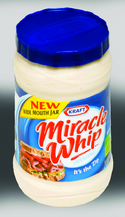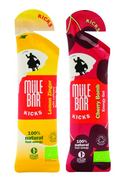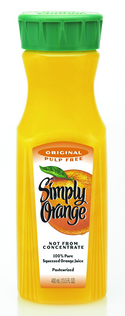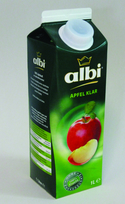Packs that please everyone
3 February 2011Lynda Searby rounds up the latest solutions to the age-old problem of creating packaging that is both senior-friendly and child-resistant.
Gable top cartons, too-tight screw caps and nail-breaking can ring pulls are three packaging devices that often come under criticism for being too difficult, fiddly or messy to open.
However, packaging designers are stuck between a rock and a hard place when it comes to improving the openability of containers. They are expected to create containers that are easy for consumers - especially older people - to open, yet do not come open at any point in the supply chain or when little hands get hold of them.
Fortunately, innovations are emerging that allow packaging designers to perform this tricky balancing act.
In the can arena, two companies - Crown Food Europe (part of Crown Holdings) and Impress Group - have been working on the openability issue. “On the food side, openability means facilitating access to products without the need for assistance or other tools,” says Michael Dunleavy, Vice President of Corporate Affairs with Crown Holdings. “One packaging solution we developed to satisfy this goal is Easylift easy-open ends. The ends are ideal for applications such as canned fruits and vegetables, soup, fish, dairy and pet food. They feature a generous gap between the end and the tab, making it easier than ever for consumers to access the product inside.”
Competitor Impress has also developed a can opening system that it claims enables the consumer to open cans effortlessly. Branded OptiLift, it features a flexible panel which becomes concave after sterilisation, increasing the gap between the panel and tab and allowing greater finger access. General Mills’ vegetable brand Green Giant and ready meals producer William Saurin were the first to bring to market cans with the OptiLift system.
Crown Food Europe has also conceived a solution that does away with the ring pull completely, replacing the conventional can end with a peelable end. The PeelSeam opening system consists of a thin, flexible aluminium lid, heat-sealed to a rigid steel or aluminium ring. Consumers simply grasp the small tab on the lid to open the can. Recently, Mediterranean fish canner Jealsa incorporated Crown’s PeelSeam end on its 1kg cans (150mm x 65mm) for the tuna product line it supplies to Mercadona under the Spanish retailer’s Hacendado brand.
Keeping tabs on openability
Tabs certainly seem to feature more and more in closure systems. For example, the plastics bottles used for tomato ketchup and milk usually have a foil liner inside the cap, which is peeled off using a little tab. But not everybody likes these tabs, as Phil Goodwins, Sales and Marketing Manager with RPC Containers, points out. “For the ageing population, whose dexterity might not be great, liners can be hard to remove with a tab,” he says.
The realisation that these little tabs didn’t suit everyone prompted the development two or three years ago of liftand-peel seals. With these, a wide half moon tab facilitates peeling of the liner material from the lid. But while lift-and-peel liners present a senior-friendly alternative to liners with tabs on smaller diameter containers, they don’t work on larger diameter containers.
“The larger the container, the more force is needed to remove a lift-and-peel seal,” says Mr Goodwins. “You can overcome this problem by making the glue layer stronger, but that adds to the price of the liner.”
Now another option is also available: the Big Tab from RPC Containers, which, as the name suggests, is a liner with a tab, but a larger u-shaped tab that makes it easier to open the container. Big Tab will shortly be on shelf on a major mayonnaise brand.
An easy to locate, easy to pull tab is also a key feature of an effective tear tape system. European snacks and biscuits giant United Biscuits has long added Payne tear tape to all of its roll wrap packaging. However, from consumer feedback it emerged that users were sometimes having difficulty locating the end of the tape.
Payne developed a new device, the Communication Tab System, in response to this problem. By cutting a larger, u-shaped or horseshoe tab into the tape during its application, the tab protrudes beyond the seal area to deliver a more prominent opening feature.
This feature has been added to UB’s new Jacob’s Cheddars cheese biscuit packaging, and the roll wrap packs are printed with the words ‘Easy Open Tear Tape’, to communicate the easy opening benefits to the consumer.
Consumer-friendly carton closures
Difficult to open gable top cartons have long been another source of frustration to consumers, and their unpopularity has prompted many packaging designers to look at cartons with alternative opening mechanisms, such as screw tops.
Mexican dairy co-operative Grupo Alpura is one company that until recently was using gable top cartons for its pasteurised milk. Then in 2009, the milk processor decided to replace its three gable top lines with three Tetra Top lines, in a bid to increase sales of fresh milk by 15%. Tetra Top is a roll-fed carton with a plastics top, which is formed in the filling machine via Tetra Pak’s patented Moulding Concept Technology. Since replacing the gable top systems with Tetra Top, the company’s chilled segment sales have increased 23%.
Elopak, another major liquid carton manufacturer, was recently approached by one of its customers, albi, with a carton closure challenge. The German juice manufacturer supplies catering juices to Lufthansa and wanted to make it possible for airline staff to differentiate easily between opened and unopened packs in order to adhere to regulations that do not permit opened liquid products across international borders. Working with Bericap, Elopak developed a totally transparent Pure-Twist X cap for the one litre cartons. When the cap is opened, a cut removes the white cartonboard under it so a black hole is visible through the transparent cap.
Even screw tops have their issues, however. One of the main bugbears is that they are difficult to open – usually because the cap has been ‘over-torqued’, in other words, done up too tightly, or because it is hard to grip.
Closure Systems International (CSI) says it is making caps easier to open through a variety of techniques, including more functional knurl patterns, brand building shapes and designs, and the use of alternate materials.
The company’s EZ Grip cap, which has been adopted by Maxwell House Coffee, is layered with an exterior injected soft material that allows consumers to both easily open and tightly close the jar, locking in the flavours.
Another innovation from CSI, the Xtra-Lok mini closure, is said to offer beverage consumers a dual benefit - a visually appealing design that is also easier to open thanks to CSI’s Sure Grip knurl pattern. “The knurls are bold and deeply moulded, providing outstanding grip-ability to consumers of all ages, even when wet,” explains Jane Haywood-Rollins, Global Marketing Services Manager with CSI. The new short profile offers environmental and economic sustainability benefits, and provides a return toward the nostalgic look of crown closures, but with the added benefits of resealability and easy opening convenience
The caps CSI designed for Simply Orange’s single serve juice bottle and Kraft’s Miracle Whip jar are two more examples of easier opening screw caps. “The Simply Orange closure provides indentations for gripping ease among all ages, including the growing ageing population demographic,” says Ms Haywood-Rollins. “The aggressive knurl design on the Miracle Whip jar also provides a gripping surface that makes opening wide diameter jars easier. In addition to the enhanced consumer opening ergonomics, these designs provide brand differentiation and high visibility shelf impact.”
Designing containers that are easy to open but not so easy as to compromise product security and safety might seem an impossible task, but as these innovations demonstrate, it can be done. By combining ergonomic functionality with an attractive physical appearance and strong environmental credentials, packs can please everyone.
Reclosable tear top tubes
Unette’s Alex Terrell describes tear top tubes as the ‘Rolls Royce’ of sachets. “They don’t leak, you can tear the top off easily and they look fantastic,” he says.
Traditionally, they have been used as an alternative to standard sachets for single-use items such as shampoo samples and sauce and condiment portions. Now, Unette’s R&D has yielded the new Tear and Tuck line of reclosable, fitment-free, flexible tubes.
“Reclosable tubes have been continually requested from Unette for a practical solution to multiple use applications over the short term, say one or two days,” says Mr Terrell. “Being ostensibly reclosable rather than resealable, these tubes are best suited to topical creams or gels as well as adhesives and sealants for kits.”
Semi-transparent closure: an innovation from Elopak enables airline staff to differentiate easily between opened and unopened juice cartons. Elopak Fish canner Jealsa has incorporated Crown's PeelSeam peelable end on the 1kg cans of tuna it supplies to Mercadona under the Spanish retailer's Hacendado brand. PeelSeam The aggressive knurl design on the Miracle Whip jar provides a gripping surface that makes opening wide diameter jars easier. Miracle Whip The closure CSI designed for Simply Orange provides indentations for gripping ease. Simply Orange Tear top tubes are the ‘Rolls Royce of sachets’, according to Unette. Unette






